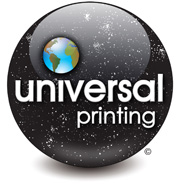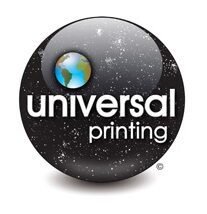Understanding Resolution – Digital Printing from Digital Photos
In our previous blog post, we started our New Year’s Resolution of “Understanding Resolution” (if you missed it, just click the link to check it out.) This time, we’re helping you put this information to good use by helping you get better images from the very beginning, starting with your Digital Camera. Maybe you just got a new one over the Holiday Season, or perhaps you’ve had one for a while now. It’s never too late to review your settings and make sure that your getting the best your camera can offer.
How MEGA are YOUR pixels?
Guess what? Megapixels don’t matter! That’s right… I said it, and I’ll stand behind it. Of course, we need to really know what a “megapixel” is. “Mega” stands for million, as in 1 million “bytes” is 1 “megabyte.” So 1 million “pixels” is 1 “megapixel.” The digital cameras of the late 80’s / early 90’s started out as 640 pixels X 480 pixels (i.e. 640 x 480 = 307,200 pixels).
So now, let’s consider your amazingly impressive HDTV. Maybe you have a 38″ screen or even a 50″ screen. The size of the screen doesn’t matter, because it simply means larger pixels. Even at the highest 1080p, you’re looking at 1920 pixels wide, by 1080 pixels high. So you’re amazing HDTV, which is sharp, clear, and crisp in your living room, is only supporting an image that’s… wait for it… (1920 x 1080 = 2,073,600) 2 megapixels!
Camera manufacturers know that any print larger than 12″ x 18″ is going to be viewed at some distance. It’s generally understood that anything over 3 megapixels is adequate at that size, so when we start talking about 5 megapixel, 6 megapixel, 8… and so on; it’s more about the hype and sounding impressive. At the end of the day, it’s really all about the quality of the image. I GREAT photo taken with a 3MP camera will always outshine a blurry, unbalanced, unfocused photo taken with a 12MP camera. For another point of view on this check out this blog by David Poque of the NY Times.
Get the best resolution from your camera:
If you have not yet taken the digital image, adjust your camera to the highest quality setting.
Taking the photo on the highest setting will maximize both the quality of the image, as well as the range of sizes at which you will be able to use it in printing projects. If possible, save your image as a lossless TIF or EPS file before doing any editing to best preserve color and sharpness.
Determine the resolution and maximum usable dimensions for any images you want to use in your project. Images should have resolution of 300 dpi at their final size in the file; 400 dpi if the image includes text. Resolution and image size are inversely proportional to each other. In other words, enlarging an image will decrease the resolution and shrinking an image will increase the resolution.
|
2 x 2″ image @ 300 dpi = GOOD |
…enlarged to 4 x 4″ = 150 dpi = BAD |
|
17 x 13″ image @ 72 dpi = BAD |
…reduced to 4 x 3″ = 300 dpi = GOOD |
To determine resolution from pixel dimensions, divide pixel width and pixel height by 300. This will give you the maximum size that you will be able to use your image, while maintaining a quality resolution of 300 dpi. Divide by 400 for images that include text.
Example:
- Start with 1200 pixels x 1600 pixels as the dimensions for an image with no text.
- Divide your dimensions (1200 ÷ 300 = 4 and 1600 ÷ 300 = 5.33). If the image included text, then you would divide by 400 instead.
- So, the maximum usable dimensions for the image are 4″ x 5.33″. It will print crisp & clear at this size or smaller.
Digital cameras primarily use the RGB color space. To print on a four-color printing press, all RGB images need to be converted to CMYK. When we receive RGB images, we do a standard-value conversion to CMYK, which may not be perfectly to your liking. You’re welcome to convert it yourself to control the color in ways that matter more to you. For a better understanding of the differences between RGB and CMYK images, check out More About Color: RGB-vs-CMYK

Universal Printing
Offering quality printing and communications solutions to
Raleigh, Durham, Chapel Hill, and the Triangle since 1979.
www.universalprinting.com
Tags: business solutions, cross-media marketing, Digital camera, digital printing, graphic design, Graphic Design Durham, Photohop
